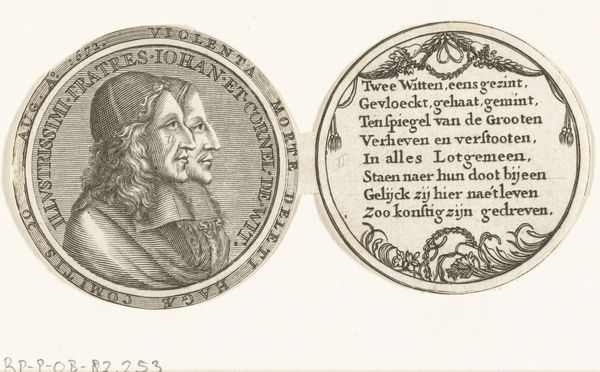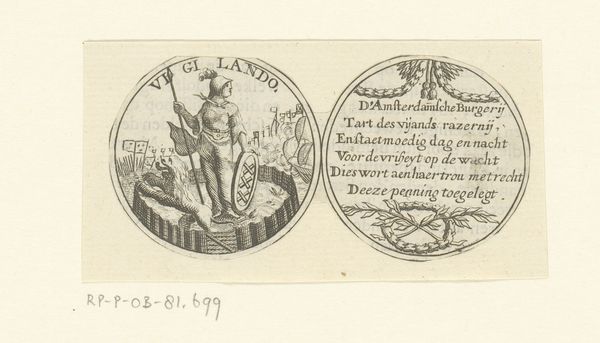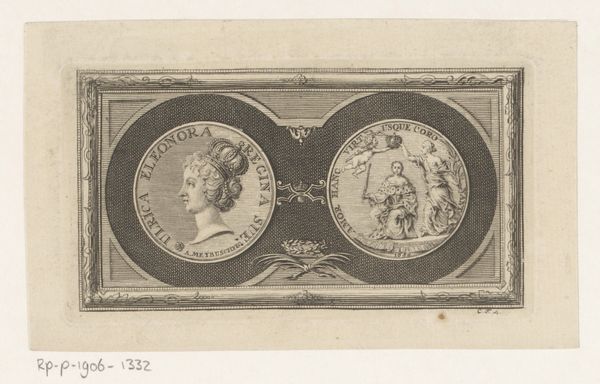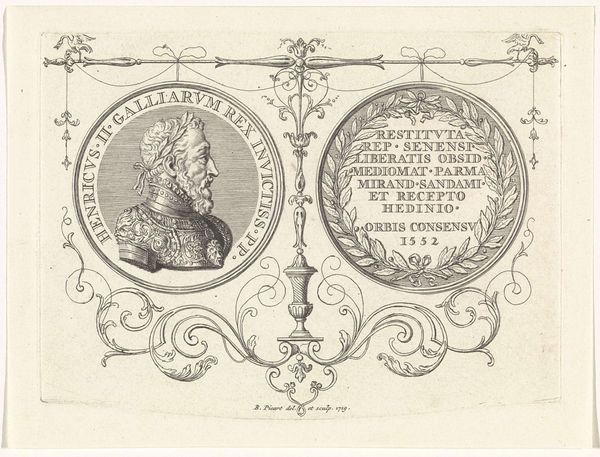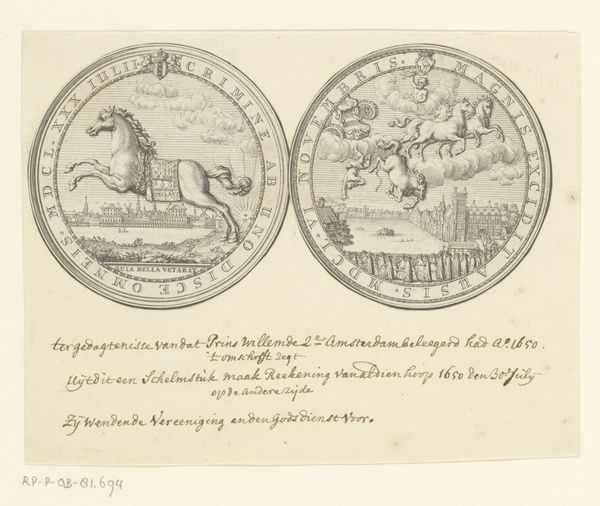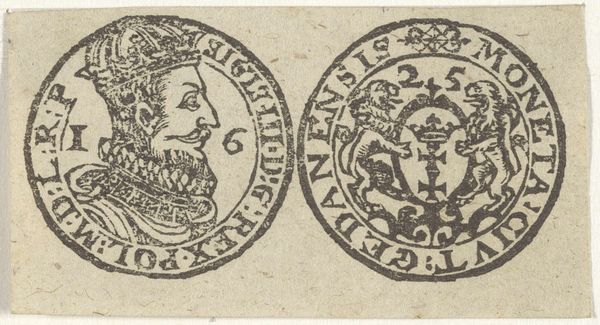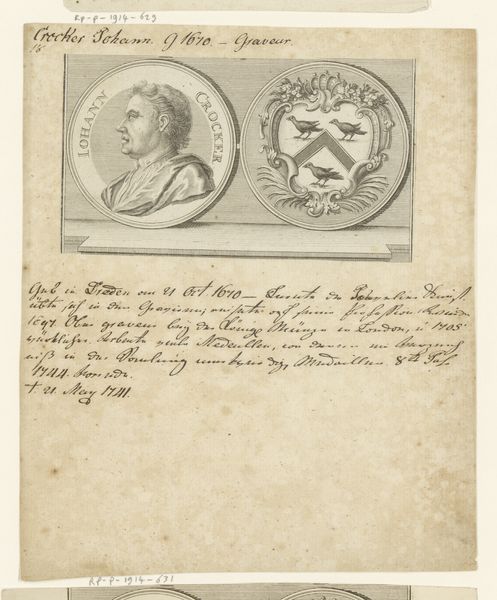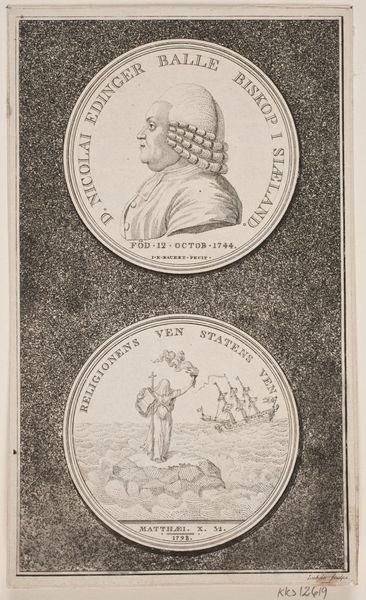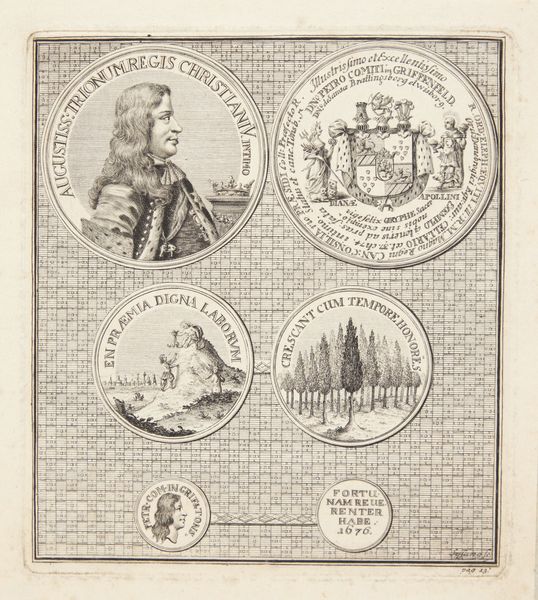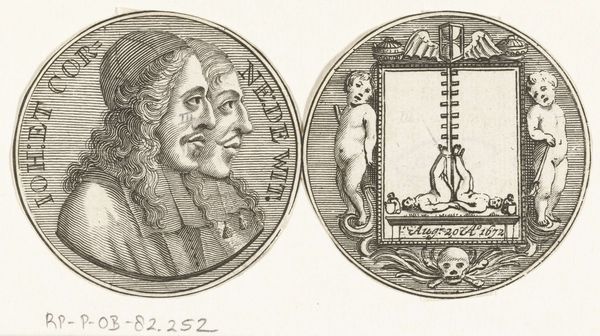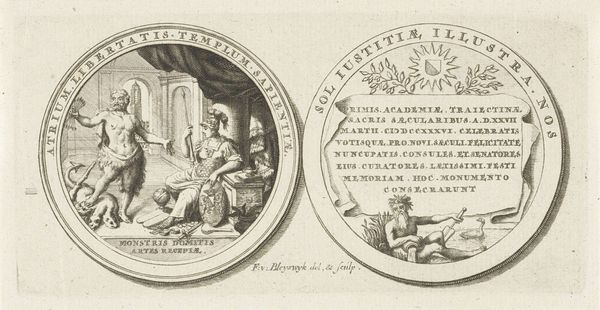
print, metal, engraving
#
portrait
#
baroque
# print
#
metal
#
old engraving style
#
cityscape
#
history-painting
#
engraving
Dimensions: height 79 mm, width 121 mm
Copyright: Rijks Museum: Open Domain
Editor: This is a medal commemorating the capture of Galway by William III, dated somewhere between 1691 and 1749. It’s an engraving, likely on metal. It feels very official, and the portrait of William is quite regal. What can you tell me about this piece? Curator: This medal is fascinating from a materialist perspective. The very act of creating these commemorative medals—the labor involved in engraving the metal, the resources used to distribute them—speaks volumes about the construction of power and public memory in this period. Consider the physical object itself: metal, a relatively durable material, chosen to preserve and disseminate a particular narrative. Editor: So, the material reflects the intended longevity of the message? Curator: Precisely! These medals weren’t just celebrating an event; they were actively shaping how that event was remembered and understood. Who commissioned the medal? Who was meant to receive and circulate it? Understanding the production process and intended audience allows us to unpack the socio-political context. Notice, for example, the inscription on the reverse. It’s in Latin, a language of the elite, suggesting the primary audience may not have been the common populace. Editor: That's interesting. I was just looking at the imagery and the idealized depiction of William. Curator: Exactly. Consider also the economic implications of such an enterprise. The mining of the metal, the artistry of the engraver, the distribution networks—all of this required capital and served to reinforce existing social hierarchies. The medal, seemingly a simple object, embodies complex economic and political relations. Editor: It makes you think about all the hands involved in even something this small. I now see how the materials and means of production tell a bigger story than just the image itself. Curator: Absolutely. By shifting our focus to the materiality of the medal and its means of production, we can gain a much richer understanding of its historical significance.
Comments
No comments
Be the first to comment and join the conversation on the ultimate creative platform.
